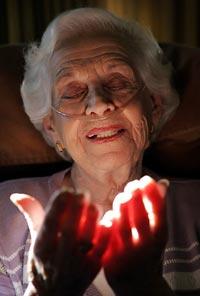This time of year I often find myself slipping into the winter doldrums, the blahs, the blues. Living in the Pacific Northwest doesn’t help. Cold, dark, damp days drag on endlessly, and it’s only mid-January. How will I survive until spring, which doesn’t begin around here until July? I have one of those artificial sunlight lamps, but the battery died. I just want to eat carbs and hibernate.
What better time, then, to sign up for an online course called Awakening Joy, which starts on February 4, 2013. (www.awakeningjoy.info/index.html) Though at this point, I’d settle for simply Curbing Misery.
My wise friend Karen sent me an e-mail about the course: “The material is stimulating and life changing and you will be astounded at the changes that can occur when you focus on igniting the joy that is within. In these challenging days it can be hard to access that inner light, but with these tools I can assure you your journey will be much easier…and more joyful.”
These days it’s hard enough accessing the outer light, let alone the inner one. Yeah, sure, I’ll give this a try. I’ve done my research. I’ve learned a thing or two about happiness and joy. The Buddhists tell us that joy is already inside of us, an innate capacity. Over time is gets covered over with habitual ways of thinking and feeling, but we can uncover it. Our suffering or happiness depends more on how we relate to outer circumstances of our lives than on the circumstances themselves. Happiness is a choice, and we can make it a habit.
Buddhist teacher Jack Kornfield writes in The Wise Heart that joy is an expression of the liberated and awakened heart, of one who lives in the present moment. He tells about a TV reporter who asked the Dalai Lama to talk about the happiest moment in his life. After considering for a moment, the Dalai Lama smiled and replied, “I think now.” Author Margaret Bonnano puts it another way: “It is only possible to live happily ever after on a day-to-day basis.”
In his book Awakening Joy, James Baraz describes joy as a feeling of well-being. I like this view, because it seems realistic, down to earth. I used to think of the word joy as a Goody-Two-shoes Pollyanna skipping down the sidewalk tossing flowers and humming a snappy tune. Ick. But well-being? Oh, I can definitely relate to that.
Baraz, the creator of the Awakening Joy course and a Buddhist meditation teacher, further writes that joy can look very different among people: for some it actually can be a “bubbly enthusiasm,” while for others it can be a “quiet sense of contentment.” Each one of us has our own unique way of experiencing and expressing joy based on our individual temperament. “Your happiness may not look like someone else’s,” he says, “but you can find the expression that is uniquely yours.”
There is, however, a danger of getting too carried away with “trying” to be happy, where one focuses solely on him- or herself. Researchers have found that happiness tends to find people who are focused on others. They say helping or giving are proven sources of happiness. Albert Schweitzer described this when he said, “I don’t know what your destiny will be, but one thing I do know: the only ones among you who will be really happy are those who have sought and found how to serve.”
One of the most powerful forms of Buddhist practice is the way of the bodhisattva. Bodhisattva is a Sanskrit word for a being who is dedicated to awakening and to acting for the benefit of all living beings. Kornfield writes that “the fulfillment of our happiness comes only from serving the welfare of others as well as ourselves. Our highest happiness is connected with the well-being of others.”
Bodhisattvas appear in many different forms: a social worker, a nurse, a caring grandmother, a toll taker on New York’s Triborough Bridge. Or it might just be the person using the locker next to yours at the YMCA. I know it’s possible, because I’m pretty sure that the gray-haired, seventy-something lap swimmer I’ve been chatting with pleasantly over the last three years is one.
Ruth, a soft-spoken, reserved grandmother, has revealed bits of her life only after my gentle prodding as we chat in the locker room. Her eyes fill with tears when she tells me that her husband—the love of her life—died several years ago, and she lost her sister to cancer last fall. One of her children, a special-needs adult, still lives at home and requires full-time care. When she’s not tending to her daughter or working out at the Y, Ruth volunteers at the senior center and helps out at an elementary school.
“You are such a giving person,” I said to her one morning as I toweled off my hair. “I think it’s so great that you do all this volunteering.”
With a sparkle in her gray eyes, she replied, “Ah, but I do it for selfish reasons. You see, I get so much more back than I give.”
As I pondered what she’d said, she added as she zipped up her winter jacket and headed for the exit, “I’ve come to learn that one of the best ways to find happiness is to serve others.”
I think she’s on to something.


Great blog, Faren. It gives me joy to know you are taking the course and I’m so pleased that you have advertised it in this way. Here’s to Joy!!!! Karen
Glad you like it, and thank you!